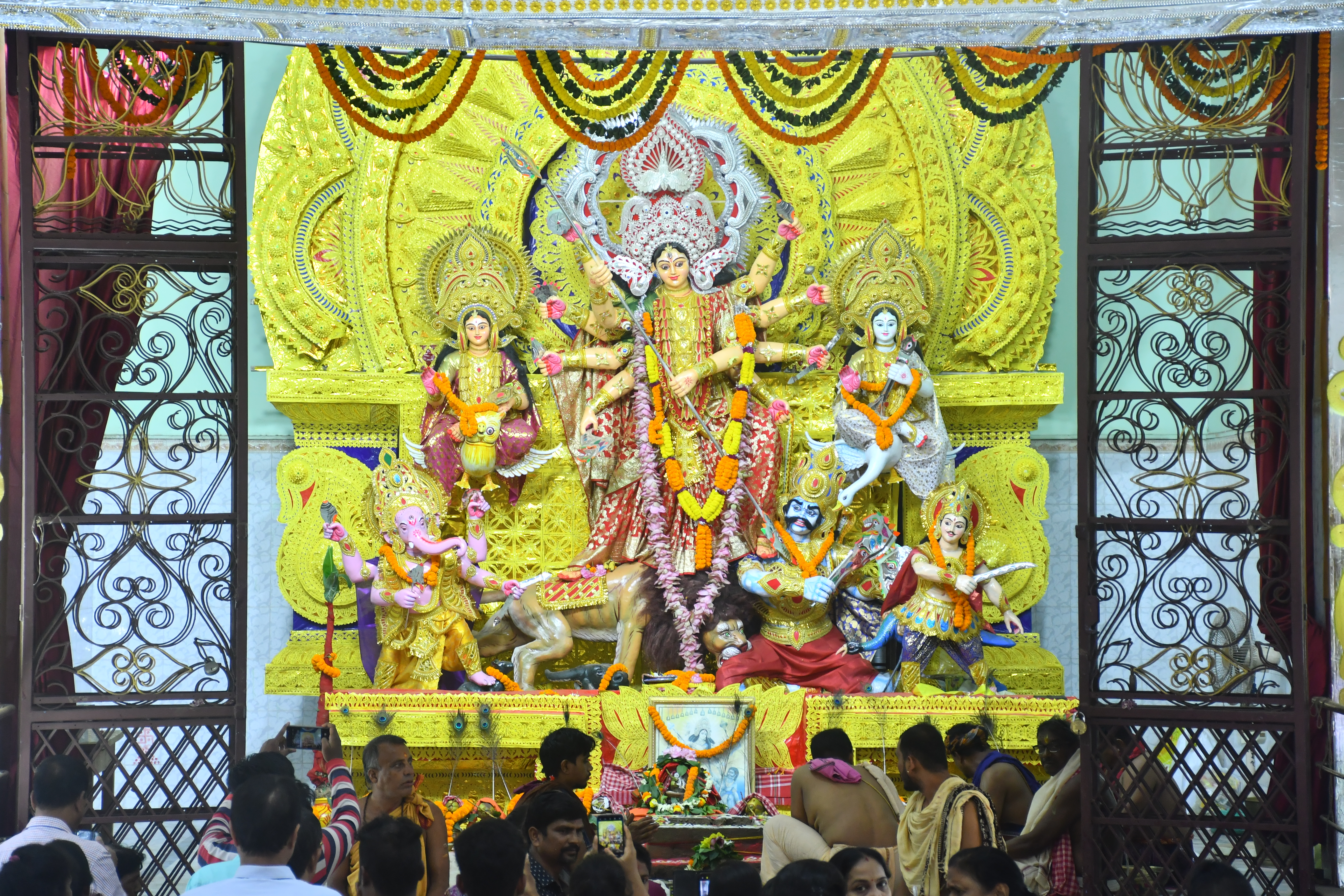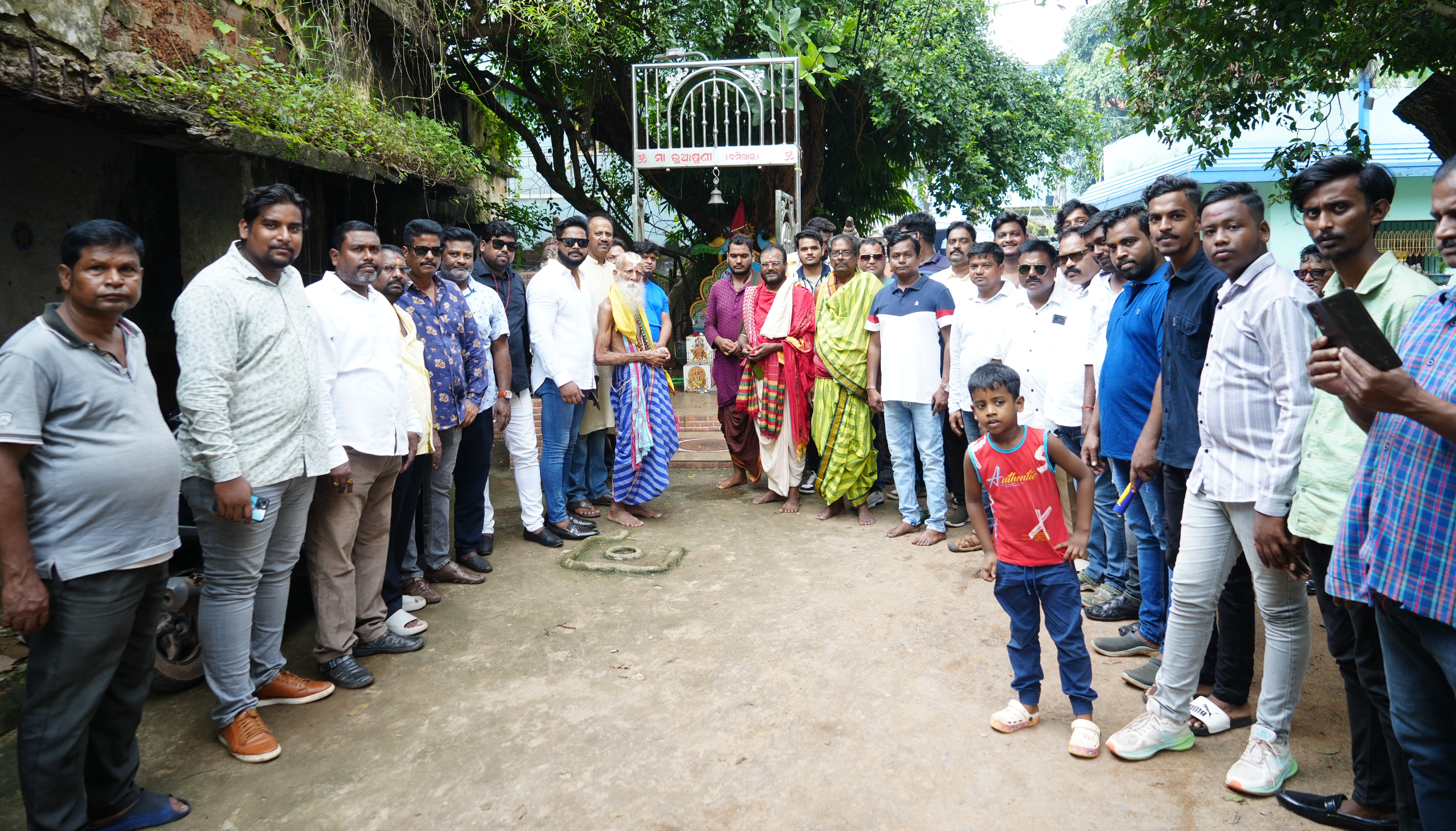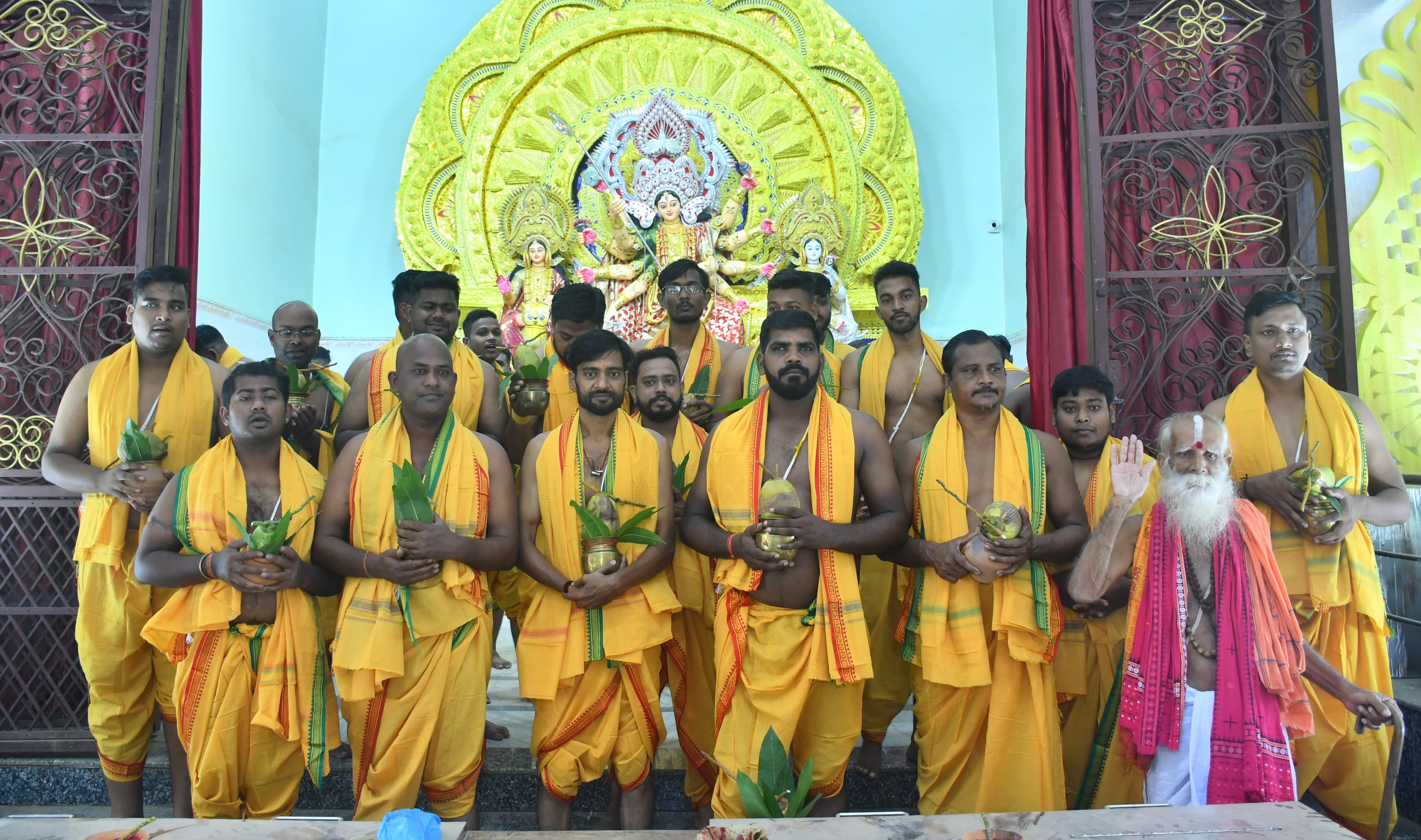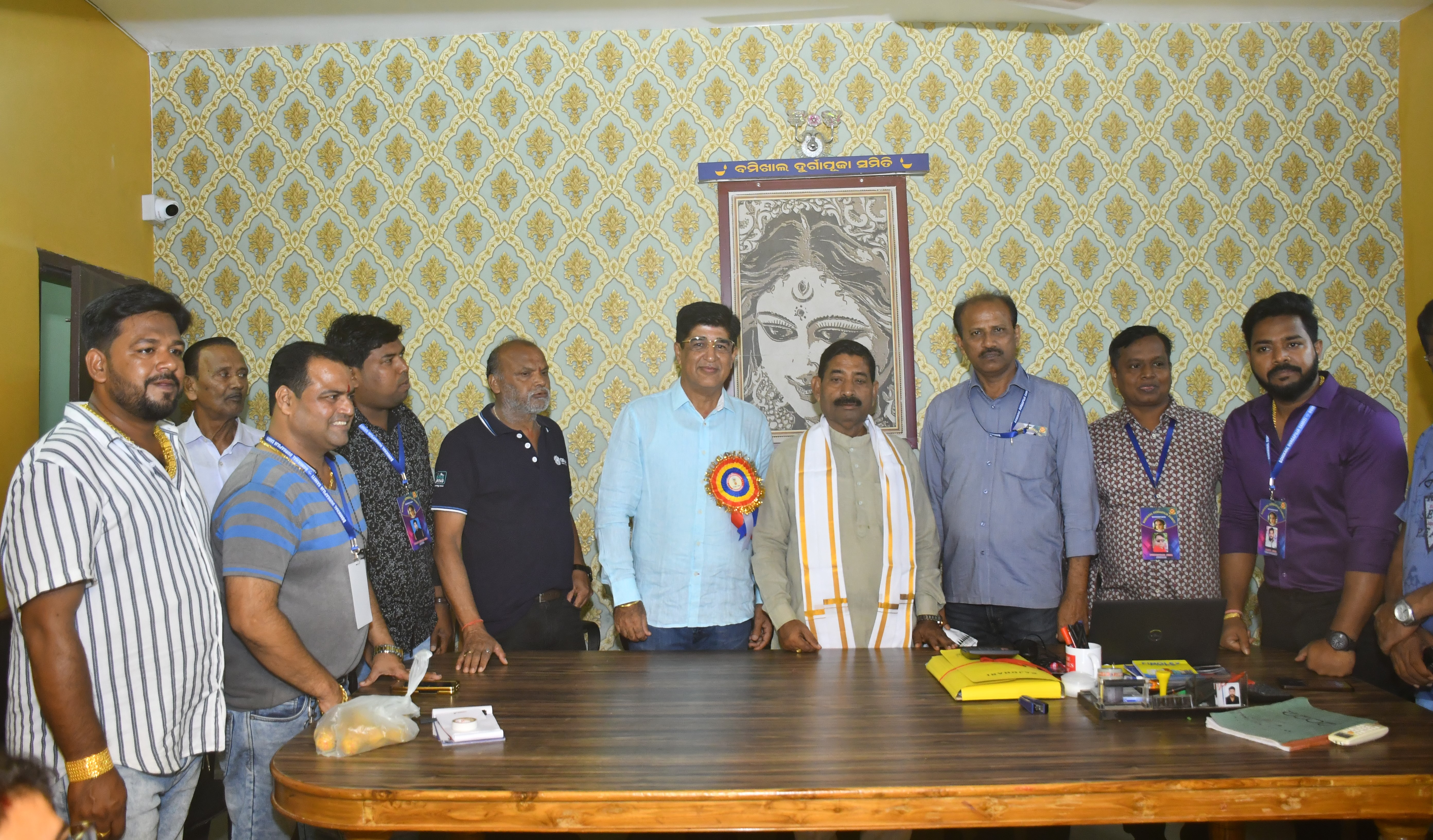A Brief Story of Durga Puja
Durga Puja is a festival that celebrates the victory of the goddess Durga over the demon king Mahishasura and the triumph of good over evil. Here are some stories and spiritual aspects of Durga Puja.
The Mythology
According to Hindu mythology a demon named Mahishasura (the buffalo-demon), after praying long and hard to Lord Shiva, was granted a boon that no man or deity would be able to kill him. Mahishasur was very pleased with this boon as he felt no one could ever defeat him. He then started his reign of terror over the Universe. He even attacked the abode of the gods and conquered the heavens.
As the gods chafed at their defeat and humiliation, they took refuge under Lord Brahma, who took them to Lord Shiva and Lord Vishnu. The only solution left was the creation of a woman who possesses the ultimate power to defeat Mahishasur. Pure energy blazed forth from Brahma, Vishnu and Shiva – the trinity forming the ‘Shakti’ or energy of Godhood, all concentrating at one point that took the form of Goddess Durga. The gods then gifted the goddess with their weapons and other divine objects. Lord Shiva gave her a trident while Lord Vishnu gave her a spinning disc. Varuna gave her a conch and noose, and Agni gave her a spear. From Vayu, she received arrows. Indra, gave her a thunderbolt, and the gift of his white-skinned elephant Airavata was a bell. From Yama, she received a sword and shield and from Vishwakarma (god of Architecture), an axe and armor.
The beautiful Durga, armed with the fearsome weaponry of the gods,
was ready to engage in battle. The demons could not help being awestruck.
As Mahishasura’s armies were struck down effortlessly by Durga, it became
obvious to him that he was not invincible. Mahishasura was shocked and enraged
by the defeats on the battlefield. He took on the form of a demonic buffalo,
and charged at the divine soldiers of Durga, goring and killing many and lashing
out with his whip-like tail. Durga’s lion pounced on the demon-buffalo and engaged
him in a battle. While he was thus engaged, Durga threw her noose around his neck.
Mahishasura then assumed the form of a lion and when Durga beheaded the lion,
Mahishasura escaped in the form of a man who came immediately face to face with
a volley of arrows from Durga. The demon escaped yet again and then having
assumed the form of a huge elephant, battered Durga’s lion with a tusk. With
her sword Durga hacked the tusk into pieces. The demon reverted once more to
the form of the wild buffalo. He hid himself in the mountains from where he
hurled boulders at Durga with his horns. Durga drank the divine nectar which
was the gift of Kuber. She then pounced on Mahishasura, pushing him to the
ground with her left leg. She grasped his head in one hand, pierced him with
her sharp trident held in another, and with yet another of her ten hands she
wielded her bright sword, beheading him. At last he was killed, and the remnants
of the demon army fled in terror. Goddess Durga was also credited with killing
the demons Shumbha and Nishumbha. There are innumerable stories around Durga,
her courtship and marriage with Shiva, humiliation of Shiva at the hands of
King Daksha (Daksha-yagna), Shiva’s tandava which cut Sati (Durga) into small
pieces which fell in different places in India (these places became holy places
of pilgrimage with famous temples).
Goddess Durga has altogether 108 names, denoting her beauty, majesty, grace
and her role as the Protector and the Mother Goddess..
Durga Puja (worshipping Goddess Durga) was originally celebrated in spring.
However, as mentioned in the epic Ramayana, Lord Rama worshipped ‘Mahishasur-mardini’
or slayer of the buffalo demon, by offering 108 blue lotuses and lighting 108 lamps,
in the Hindu month of Ashwin (September-October) for invocation of the goddess before
going to war with the demon king Ravana (5000-3000 BC). This autumnal ritual is
known as ‘akal-bodhan’ or out-of-season worship. An interesting anecdote is that Rama,
while worshipping Goddess Durga, found he was 1 lotus short of the 108 required,
whereupon he proceeded to exenterate one of his own eyes with his bow and arrow
(his eyes were said to be as beautiful as a lotus – kamal-lochan)
as an offering. Seeing his faith, the Goddess immediately stopped him by grasping
his arm.
Recent history
Raja Kangshanarayan of Taherpur or Bhabananda Mazumdar of Nadia is credited for having organized the first Sharadiya or Autumn Durga Puja in Bengal in 1606 AD. The origin of the community Durga puja can be traced to the twelve friends of Guptipara in Hoogly, West Bengal, who collected contributions from local residents to conduct the first community puja called the ‘baro-yaari‘ puja or puja conducted by twelve ‘yaars’(friends) in 1790. ‘Durga pujo was first started in Kolkata in 1832 by Raja harinath of Cossimbazar, who performed the Durga Puja at his ancestral home in Murshidabad from 1824 to 1831, notes Somendra Chandra Nandy in ‘Durga Puja: A Rational Approach’ published in The Statesman Festival, 1991. The baro-yaari puja evolved into the sarbajanin or community puja in 1910, when the Sanatan Dharmotsahini Sabha organised the first community puja in Baghbazar in Kolkata. The development of the community Durga Puja in the 18th and 19th century Bengal as a multifaceted socio-religious and cultural event contributed vigorously to the development of the modern Hindu Bengali culture. Initially, British officials and soldiers regularly attended Durga Pujas organised by influential Bengalis. ‘The most amazing act of worship was performed by the East India Company itself: in 1765 it offered a thanksgiving Puja, no doubt as a political gesture to appease its Hindu subjects, on obtaining the Diwani of Bengal’. (Sukanta Chaudhuri, Ed. Calcutta: the Living City, Vol. 1: The Past). It is reported that even the Company auditor-general John Chips organized Durga Puja at his Birbhum office. In fact, official participation of the British in the Durga Puja continued till 1840, when a law was promulgated by the East India Company banning such participation.”
Modern history
The tableau of Goddess Durga also features her four children, flanked on her right by Goddess Lakshmi, the goddess of wealth, and Lord Ganesh, the god of wisdom, while on her left is Goddess Saraswati, the goddess of learning and Lord Kartik, the god of strength and valour. The main Puja is spread over 4 days, from the 7th day of the moon (Saptami) to the 10th day of the moon (Dashami). Dashami, also known as Dussehra in other parts of India, is the final day of the Puja when Lord Rama achieves victory against the demon-king Ravana. Folklore has it that Goddess Durga visits her father, Himavat, the personification of the Himalayas, during the 4 days of Durga Puja, and returns to the abode of her husband, Lord Shiva, on the final day. The traditional pratima or idol is made of clay with all five gods and goddesses under one structure known as ‘ek-chala'(one cover).

Bomikhal Durga Puja Samiti , Bhubaneswar , 2024
There are two kinds of decorations that are used on clay – sholar saaj and daker saaj. In the former, the pratima is traditionally decorated with the white core of the shola reed which grows within marshlands. As the devotees grew wealthier, beaten silver (rangta) was used. The silver used to be imported from Germany and was delivered by post (dak). Hence the name daker saaj. The huge temporary marquees – held by a framework of bamboo poles and draped with colourful fabric – that house the idols, are called ‘pandals’. Modern pandals are highly creative, artistic and decorative, and attract visitors who go ‘pandal-hopping’ during the 4 days of Durga Puja in Kolkata and other major cities of India.
Durga Puja at present is celebrated mainly by Bengalis and people from Eastern India, but people from the other regions of India and other communities participate enthusiastically as well. New Delhi, the capital city of India, has been organising Durga Puja since 1910, while Mumbai Durga Pujas are a huge draw with the crowds because they are graced by the Bollywood celebrities and performers.
Durga Puja Pandals
Durga Puja pandals are elaborately designed temporary structures that house the idols of Goddess Durga during the festival. These pandals, often modeled after famous landmarks, cultural themes, or abstract concepts, serve as a centerpiece of celebration in various parts of India, especially in West Bengal. Artisans spend months creating these intricate decorations, combining creativity and traditional craftsmanship. Each pandal becomes a hub of social and cultural activities, attracting large crowds who visit to admire the artistry and participate in prayers. The vibrant lighting, decorations, and devotion create a unique, festive atmosphere during the celebration of Durga Puja.

Bomikhal Durga Pandal , Bhubaneswar , 2024
The Victory





